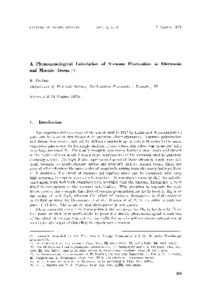Suche
Anzeige der Dokumente 1-10 von 48
Aufsatz
 Values for the electron screening in muonic atoms for all Z
Values for the electron screening in muonic atoms for all Z
(1975)
The electron screening correction in the X-ray transitions in muonic atoms is calculated within a relativistic SCF Hartree-Fock procedure for many transitions and all Z.
Aufsatz
 Superheavy elements
Superheavy elements
(Dunitz, J. D., 1975)
Aufsatz
 Inner shells
Inner shells
(Hanle, Wilhelm (Hrsg.), 1978)
Aufsatz
 Chemical and physical properties of superheavy elements
Chemical and physical properties of superheavy elements
(1976)
A knowledge of the physical and chemical properties of superheavy elements is
expected to be of great value for the detection of these elements, owing to the
need for chemical separation in their isolation and identification. The methods
for predicting their electronic structures, expected trends in their chemical and
physical properties and the results of such predictions for the individual superheavy
elements are reviewed. The periodic table is extended up to element 172.
Aufsatz
 X-Ray spectra of superheavy and quasi-superheavy elements
X-Ray spectra of superheavy and quasi-superheavy elements
(1973)
We discuss the possibility of identifying superheavy elements from the observation
of their M-shell x-ray spectra, which might occur during the collision of a superheavy element with a heavy target. The same question is discussed for the possible observation of the x-rays from the quasimolecule (quasi-superheavy element) which is formed during such a heavy-ion collision. It is shown that it is very difficult, if not impossible, to determine any information about the interesting quantum electrodynamical effects from ...
Aufsatz
 Atomic and ionic radii of superheavy elements
Atomic and ionic radii of superheavy elements
(1972)
Atomic and ionic radii are presented for the elements E104-E120 and E156-E172. It is shown that a number of effects correlated with the large relativistic contraction of orbitals with low angular momentum leads to smaller atoms for higher atomic numbers. It is expected that Cs is the largest atom in nature.










